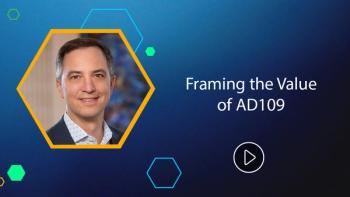
- Pharmaceutical Executive-06-01-2002
A Tall Order
The past few years have seen a steady increase in new medicines being discovered and developed in the United States and a decrease in those from Europe, where it takes much longer for new medicines to become available to patients. In some cases, it takes medicines three or four years from their approval date to reach the market in all European Union member states. So, in March 2001, the European Commission appointed a high-level group to address those issues on a Europe-wide basis, involving all the different member states and stakeholders.
The past few years have seen a steady increase in new medicines being discovered and developed in the United States and a decrease in those from Europe, where it takes much longer for new medicines to become available to patients. In some cases, it takes medicines three or four years from their approval date to reach the market in all European Union member states. So, in March 2001, the European Commission appointed a high-level group to address those issues on a Europe-wide basis, involving all the different member states and stakeholders.
The so-called G10 has finally published its much-anticipated report. Led by enterprise commissioner Erkki Liikanen and commissioner David Byrne, responsible for health and consumer protection, G10 members represent government, industry-both research-based and generic-and patients. The report makes 14 recommendations, which, taken together, provide guidelines on how to:
- expedite new products' introduction to the market
- provide better patient information
- improve pharmacovigilance
- encourage orphan and pediatric medicines.
One of the group's main goals was to improve industry's competitiveness in Europe while maintaining a high level of patient care. "Investment in R&D has doubled in the past decade in Europe, but it has risen by a factor of five in the United States,'" explains Jean-FranÇois Dehecq, president of the European Federation of Pharmaceutical Industry Associations and CEO of Sanofi-Synthelabo. "Something has to happen, otherwise we will end up with European companies making half their profits in the US market. But the United States doesn't want to pay for the whole world's research."
The report also examined the relationship between generics and innovative medicines. "It is still possible to live on 30-year-old innovations in Europe," explains Chris Viehbacher, president of GlaxoSmithKline Europe.
He says encouraging faster availability of cheaper generic medicines after patent expiry, as is the case in the United States, would free up money from government drug reimbursement budgets to pay for truly innovative medicines. "We are heading toward all new medicines originating in the United States unless we do something to encourage innovation," he adds. "The situation is grave."
The group will benchmark its success in meeting its objective by evaluating industrial competitiveness, the prevention and treatment of diseases, and the relationship between member states' structures for licensing, pricing, and reimbursement. It will also measure the time it takes member states to license new products and make them available to patients as well as monitor their market uptake.
As Liikanen explains, "The report represents a concrete framework. Publication of the report is not the end of the process, but the beginning." The group agrees that it now has a workable set of recommendations. It remains to be seen whether they can be put into practice.
Articles in this issue
over 23 years ago
Safety, Surveillance, and Product Shortagesover 23 years ago
From Phenotype to Genotype: Amersham Health Paves the Wayover 23 years ago
Stem Cells Ethics, Patents, and Politics: A Biotech Roundtableover 23 years ago
The Promise of Genomicsover 23 years ago
Optimal Pricing Strategiesover 23 years ago
Three Challenges to CRO Successover 23 years ago
Supreme Court Kills Ad Restrictions for Compoundingover 23 years ago
Oxfam Takes Pharma Patents to TaskNewsletter
Lead with insight with the Pharmaceutical Executive newsletter, featuring strategic analysis, leadership trends, and market intelligence for biopharma decision-makers.




